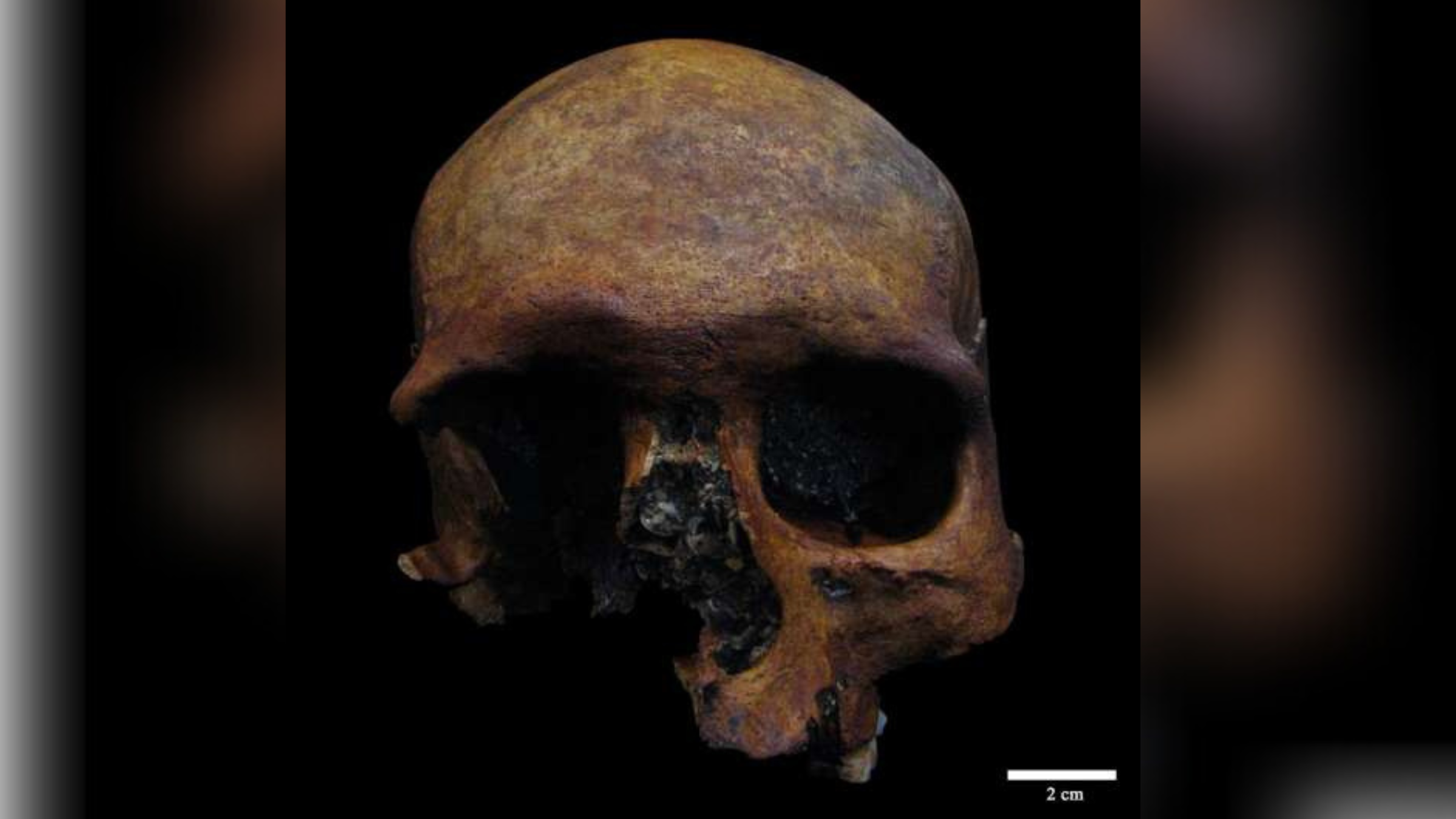Battered Roman-era skull with signs of violent trauma and a possible brain tumor unearthed in Spain
Archaeologists uncover a skull up to 1,800 years old with a lesion they say hints at a brain tumor. But not everyone agrees.
Archaeologists in Spain have unearthed a battered Roman-era skull that bears scars of violent trauma and may harbor signs of a brain tumor. However, not everyone is convinced that this battle-scarred man had a tumor, with one expert telling Live Science the findings are ambiguous.
The skull, discovered in 2019 during a caving expedition to the Sima de Marcenejas in northern Spain, dates to between A.D. 258 and 409 and belonged to a man who was likely between 30 and 40 years old when he died, possibly only decades before the fall of the Western Roman Empire.
The outside of the skull harbored three lesions, which formed before he died and were probably caused by one or more violent attacks. The other was on the inside and may have been the result of a common type of brain tumor called a meningioma, which would make it the first known case in an archaeological specimen found in the Iberian Peninsula.
"What is interesting about this finding is that it offers a window onto the health of past populations, and raises fundamental questions for us about the ability of individuals to survive these conditions, and their quality of life thereafter," lead author Daniel Rodríguez-Iglesias, an archaeologist at the Spanish National Research Center for Human Evolution (CENIEH), said in a statement.
Related: Cup crafted from prehistoric human skull discovered in cave in Spain
The authors used micro-computed tomography (microCT) to build a 3D model of the inside and outside of the skull. The surface lesions ranged from 0.29 to 0.7 inch (0.7 to 1.8 centimeters) long and 0.04 to 0.59 inch (0.1 to 1.5 cm) wide. The lesions were on the top of the head, suggesting violent trauma rather than an accidental fall.
The inside lesion, however, could have been a meningioma, the authors hypothesized. They compared the lesion with a modern meningioma in a 42-year-old woman and found that the historical lesion was similar in location, size and shape. They ruled out causes such as metabolic or infectious disease because there was only one internal lesion and no signs of tissue thickening between the two layers of bone in the skull.
Get the world’s most fascinating discoveries delivered straight to your inbox.
But not everyone is convinced that the internal lesion is a brain tumor.
"In contrast to the traumatic lesions on the ectocranial [outside] surface, which are quite clear, the lesion interpreted as caused by a possible meningioma is quite ambiguous," Christian Meyer, head of OsteoARC in Germany, who was not involved in the study, told Live Science in an email.
The authors acknowledged the uncertainty in their hypothesis. "The differential diagnosis of tumors remains one of the most challenging aspects of paleopathology," they wrote in the paper. Follow-up analysis could clear up the picture.
The findings were published July 28 in the journal Virtual Archaeology Review.

Emily is a health news writer based in London, United Kingdom. She holds a bachelor's degree in biology from Durham University and a master's degree in clinical and therapeutic neuroscience from Oxford University. She has worked in science communication, medical writing and as a local news reporter while undertaking NCTJ journalism training with News Associates. In 2018, she was named one of MHP Communications' 30 journalists to watch under 30.



